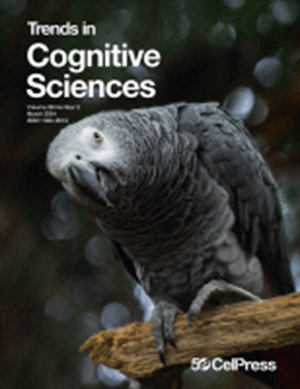快速连接调制统一了长期记忆和工作记忆。
IF 17.2
1区 心理学
Q1 BEHAVIORAL SCIENCES
Trends in Cognitive Sciences
Pub Date : 2025-05-01
Epub Date: 2025-03-14
DOI:10.1016/j.tics.2025.02.006
引用次数: 0
摘要
Panichello等人最近证明,工作记忆(WM)信息可以在没有活跃神经放电的情况下维持。相反,它被储存在快速调节的神经连接模式中。这验证了长时记忆的活动沉默模型,并统一了长时记忆和长时记忆的机制。在这里,我们强调这些发现的后果。本文章由计算机程序翻译,如有差异,请以英文原文为准。
Rapid connectivity modulations unify long-term and working memory.
Panichello et al. recently demonstrated that working memory (WM) information can be maintained without active neural firing. Instead, it is stored in rapidly modulating neural connectivity patterns. This validates the activity-silent model of WM, and unifies the mechanisms of long-term memory (LTM) and WM. Here, we highlight the ramifications of these findings.
求助全文
通过发布文献求助,成功后即可免费获取论文全文。
去求助
来源期刊

Trends in Cognitive Sciences
医学-行为科学
CiteScore
27.90
自引率
1.50%
发文量
156
审稿时长
6-12 weeks
期刊介绍:
Essential reading for those working directly in the cognitive sciences or in related specialist areas, Trends in Cognitive Sciences provides an instant overview of current thinking for scientists, students and teachers who want to keep up with the latest developments in the cognitive sciences. The journal brings together research in psychology, artificial intelligence, linguistics, philosophy, computer science and neuroscience. Trends in Cognitive Sciences provides a platform for the interaction of these disciplines and the evolution of cognitive science as an independent field of study.
 求助内容:
求助内容: 应助结果提醒方式:
应助结果提醒方式:


